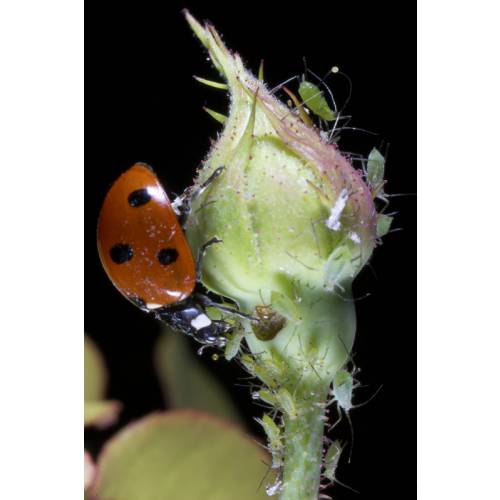
Cure
The biological fight
- Details
-
The biological fight means fighting certain diseases using the natural predator of what causes the disease in the first place, such as the classic example of ladybirds used against aphids. The biological fight offers a lot more possibilities. However, it must be used with precaution !
How does it work ?
The biological fight is a curative method, that is to say that it only acts if a destructor is present, and not before it arrives. With the biological fight, we aim to find again an equilibrium mimicking nature, where predators (also called “biological fight agents”) regulate all proliferation. In garden, the wildlife is often much reduced, the introduction of these biological fights’ agents allows you to obtain equilibrium quicker, against a particular pest. With this method, you can limit the proliferation of annoying pests, such as slugs, green worms that eat the plant’s roots, weevils (which clip the leaves edges) and many others.
How to proceed?
Firstly, to establish the biological fight, you need to be certain of the type of pest that you need to fight. There is not a biological solution for every problem, far from it! When you have selected the biological fight agents needed, think about ordering them in advance. In general, they are living animals and they cannot live for more than a day before release. Because of this, the biological fight is limiting! All you have to do is to release the bugs (sometimes quite small!) on the infested plant. The nematodes (microscopic roundworms), which are biological fight agents of a particular kind, need to be applied on a wet soil, with a watering can as they need to be diluted in water.
The right time
In order for the biological fight to produce results, the temperature and the humidity must be compatible with the needs of the predator. It is simply bug farming that you are undertaking! Therefore, biological fight agents can only be introduced at certain periods of the year, when the temperature is mild, neither too hot nor too cold. The spring, after the last frosts, is often the best time.
A necessary equilibrium
In using the biological fight, you are not going to eradicate all the pests that you are fighting. Nature tends to re-create an equilibrium; so some pests will always escape their natural predators. If the predators were to disappear, the pests could again proliferate. However, if this proliferation were to take place in the predator’s presence, the latter would be able to regulate this new proliferation, with a time delay (the time needed to lay its eggs and hatching time!), often several weeks.
The biological fight is quite appealing but apart from the use of nematodes ( microscopic round worms) against slugs and weevils, this method is ill adapted to gardens. Nothing will replace a manual intervention done at the right time, just before a proliferation is about to become uncontrollable! - Photos (2)


